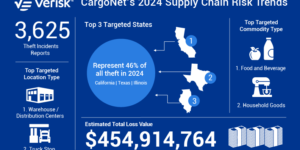U.S. employers across various industries and regions are struggling to meet their employees’ health care benefits needs—and employee satisfaction, wellbeing and retention are at stake, according to an annual Aflac WorkForces Report.
The report, conducted by Aflac Incorporated, a provider of supplemental health insurance, tracks the state of U.S. workplaces, year over year, capturing trends, attitudes, needs and experiences in healthcare and benefits administration.
The survey underscores employees’ concerns about mental health—especially burnout.
Employees want their employers to care about their overall wellbeing and provide resources to stay ahead of burnout, but the study indicates their confidence is waning leading some to consider other job opportunities.
Consistent with 2022 survey findings, more than half (57 percent) of all American workers say they are currently experiencing at least moderate levels of burnout, the report found. Workplace stress was to blame, with heavy workloads as the biggest stressor —disproportionately affecting both women and younger workers.
Employees’ confidence in how much their employers care about them has declined significantly to 48 percent in 2023, down from 56 percent in 2022 and 59 percent in 2021.
The overwhelming majority (89 percent) of employees reporting high levels of burnout also have experienced other mental health challenges over the past year, including anxiety, depression and trouble sleeping.
A significant number of employees are facing moderate to high levels of burnout, 67 percent of Gen Z and 64 percent of millennials.
Women report higher levels of burnout, with 75 percent reporting burnout at work as opposed to 58 percent of men.
“Survey results on mental health and wellbeing in the workplace are alarming and continue to be challenging, but employers can face these challenges head-on and turn them into opportunities,” said Jeri Hawthorne, senior vice president, chief human resources officer, Aflac Incorporated. “Offering benefits that include mental health tools and resources, in addition to work-life balance perks, such as flexible work schedules, can help with employee satisfaction, retention and recruitment.”
The steady rise in benefits costs and inflation are causing employers to carefully navigate benefits budgets, employee satisfaction and retention.
The study revealed that more than half of employees (53 percent) are at least somewhat likely to accept a position with lower pay but better benefits.
“The cost of benefits is creating a ripple effect for employers,” said Hawthorne. “They want to remain competitive by offering benefits their employees are looking for while staying budget conscious. They’re also faced with retention pressure and tough decisions to push expenses to employees, such as increasing employee deductibles or employees’ share of health insurance premiums.”
The gaps are widening between employers’ perceptions and employees’ lived experiences with benefits satisfaction and understanding, according to the study.
More than three quarters of of employers (78 percent) believe their employees are highly satisfied with their benefits, compared to only 59 percent of employees who express high satisfaction.
Nearly the same number of employers (79 percent) think employees understand benefits costs well, while fewer than half (48 percent) of employees say they do.
“When employees do not fully understand the inner workings of their policies and health care costs, it’s difficult for them to prepare for an unexpected medical event,” said Hawthorne. “It’s important for employers to actively communicate about benefits year-round — not just during open enrollment periods.”
Rising costs and fear of unexpected medical expenses fuel employee anxiety. As a result, employees spent less and saved more over the last year, according to the survey. Despite this, the state of financial wellness among American workers and their outlook on the economy remains fragile.
More than half (51 percent) of employees have savings on hand for a medical bill, up from 45 percent in 2022. But 50 percent report they can’t afford more than $1,000 in out-of-pocket medical expenses.
More than half (54 percent) of employees say they could survive a month without a paycheck, down from 62 percent in 2022.
Half of employees surveyed think the economy is worse than it was a year ago; 30 percent indicate that they are in a worse financial position than they were a year ago.
The 2023-2024 Aflac WorkForces Report, conducted by Kantar on behalf of Aflac, is the 13th annual study examining benefits trends, attitudes and use of employee benefits in the U.S. workforce in various industries and business sizes. The employer survey took place online June 2-25, 2023, and the employee survey took place online June 2-27, 2023. Throughout this report, some percentages may not add up to 100% due to rounding of some responses. The surveys captured responses from 1,201 employers and 2,000 employees across the United States.





















 As Life Shifts Gears, Insurance CEO Chases Racing Dream
As Life Shifts Gears, Insurance CEO Chases Racing Dream  Rapid Response Effort Initiated to Respond to Fraud After Wildfires
Rapid Response Effort Initiated to Respond to Fraud After Wildfires  First 2025 Atlantic Hurricane Season Forecasts 7 Named Storms
First 2025 Atlantic Hurricane Season Forecasts 7 Named Storms  Smoke, Coverage Issues Cloud Wildfire Forecast: $35-$45B Losses Insured
Smoke, Coverage Issues Cloud Wildfire Forecast: $35-$45B Losses Insured 




